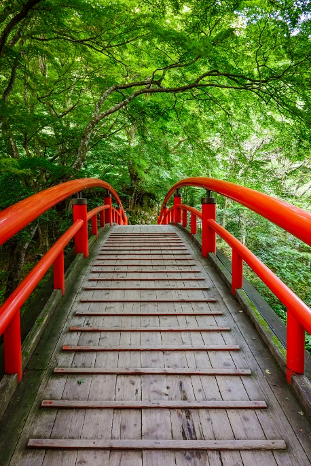Grandma Taka was a steady presence in my childhood. While she spoke mainly Japanese, she’d learned a little English. And despite my lack of Japanese, I was very close to her and felt that we understood one another.
Grandma often babysat my brothers and me, cleaning the house, cooking dinner, and tending the large garden in the backyard. When she cleaned our linoleum floors, she’d soak old newspapers in water, tear the wet paper into strips, and scatter the pieces over the floor. When she swept, the damp newspaper picked up every speck of dirt and dust, leaving behind an immaculately clean floor. I loved to lie on the cool linoleum afterwards, running my fingers across the smooth surface. Whatever Grandma did, whether it was cleaning, cooking, or sewing, she had her own methodology, and the results were always stellar.
In my twenties, I was going through a difficult time in my life. I felt as if I was split in two, hindered by my tendency to act “so Japanese” (passive, non-vocal), while also trying to exhibit what friends and co-workers thought was vital. (Speak your mind! Be assertive!)
I wondered if there was some way to integrate these two sides. Was there a way to “be Japanese” but also be a strong woman too?
My thoughts turned to Grandma. I knew she’d had an arranged marriage at seventeen and followed my grandfather to America. When my grandfather died in 1939, she took over the family business and kept it running throughout World War II. Her life hadn’t been easy, yet she seemed to maintain an optimistic competence.
I wondered, was there a way to scratch the surface of Grandma’s smooth veneer, to discover below, the source of her strength from which she’d grown on a distant shore? I flew to California where Grandma was living and spent ten days talking to her and taping her story.
The first afternoon, after lunch and dishes, I turned on the tape recorder and started to ask questions. I was surprised by my own ignorance, for despite being around her as a child, I really knew little about her life.
“Grandma, where were you born?”
“My bridge, Noke.”
How quaint, I thought. Grandma’s house was near a stream, and the bridge had a name.
“Where was your husband born?”
“His bridge, Iimori,” she said.
“Grandpa had a bridge too?”
“Yes, his bridge Iimori.”
I’d never been to Japan, but recalled seeing pictures of kimono clad women standing on red arched bridges. Maybe all the bridges had names.
Shifting to more romantic questions, I asked Grandma about meeting her soon-to-be husband for the first time.
“What was it like, when you met the man you were going to marry?”
“Oh,” she said. “I know him. We’re old relations.”
“But, were you scared when they told you that you were going to America?”
“I had nothing,” Grandma said, matter-of-factly. “I told them, I can do.”
She yawned and patted her round stomach. “Getting sleepy. Too much eat.”
I snapped the button to turn the tape recorder off and we stopped for the day.
Later that evening, I thought about how different my life was from Grandma’s. The questions I’d asked were framed through my own Western lens, imagining a romantic meeting with her chosen husband. But Grandma never had a choice in who she was to marry. Her marriage had not been between two people who loved each other, but between two families who found mutual benefit in the union. She had accepted her fate, even though she had to leave behind her family and everything she knew and travel to America. Yet she was determined to succeed.
Looking through my notes, I reread them aloud. “My bridge, Noke. His bridge, Iimori.” Suddenly, I realized that Grandma wasn’t saying bridge. Like other Japanese, Grandma could not say the letter “v”. Noke was not her bridge. Noke was her bur-rige, her village.
It was the first of many breakthroughs, getting a glimpse into Grandma’s life, into another era, another culture. It was my first step, walking across Grandma’s Bridge.
